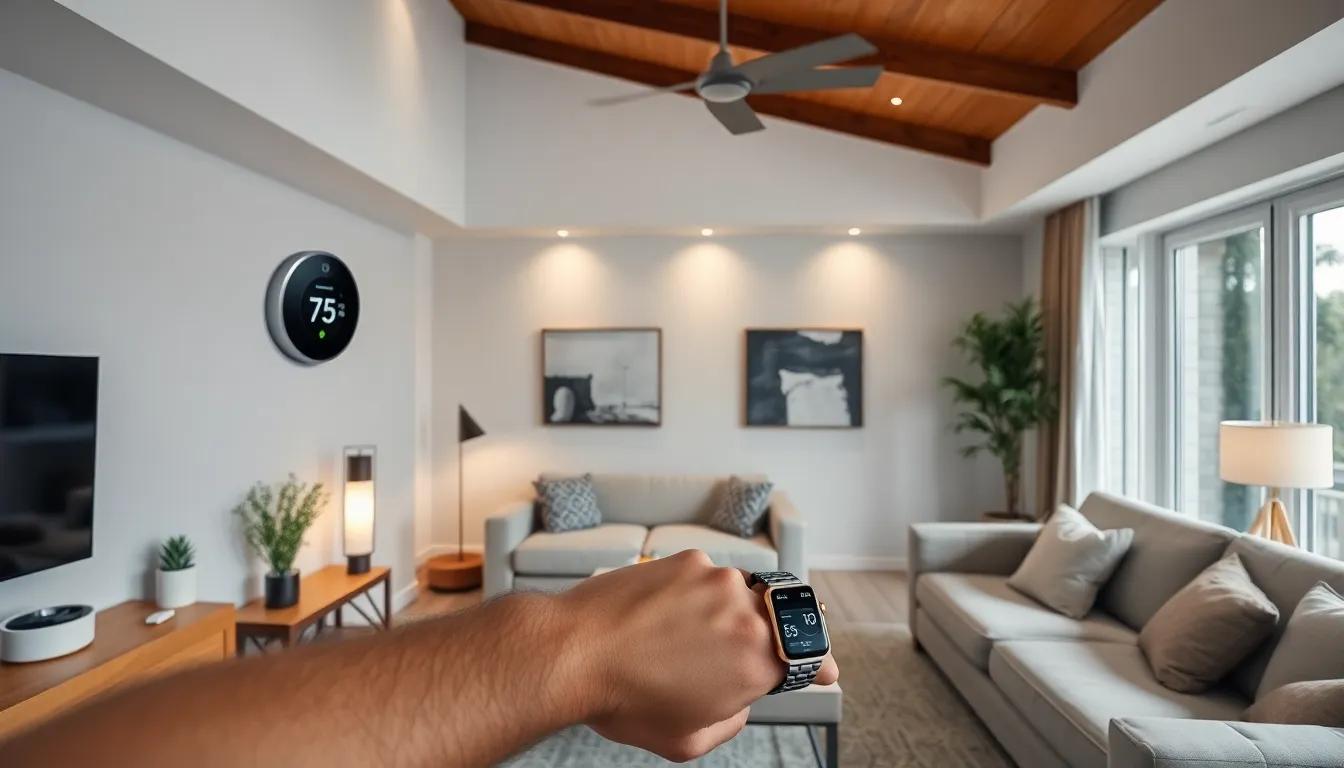Table of Contents
ToggleIn a world where your toaster could send you a text about its bread preferences, the Internet of Things (IoT) is taking home gadgets to the next level. Imagine a life where your coffee maker knows you better than your best friend, brewing the perfect cup just as you stumble out of bed. With IoT gadgets, that dream isn’t just a fantasy; it’s reality.
Overview of IoT Gadgets
IoT gadgets represent the intersection of technology and daily life. These devices enhance convenience and efficiency by connecting to the internet. Smart thermostats, for example, adjust temperatures based on user habits, leading to energy savings and comfort. Additionally, smart refrigerators monitor food expiration dates and generate shopping lists, minimizing waste.
Various types of IoT gadgets exist, catering to different needs. Wearable fitness trackers monitor health metrics and synchronize data with smartphones. Smart security cameras provide real-time alerts and remote access, enhancing home safety. Likewise, voice-activated assistants like Amazon Echo and Google Nest streamline tasks, from making calls to controlling smart home devices.
The market for IoT gadgets continues to grow rapidly. According to Statista, the number of connected IoT devices is projected to reach 30.9 billion by 2025. This growth fuels innovation, prompting manufacturers to develop more sophisticated gadgets. Companies focus on improving user interfaces and increasing interoperability among devices, ultimately enhancing the user experience.
Smart home ecosystems exemplify how IoT gadgets function collectively. By integrating multiple devices, homeowners can create customized environments. One common example includes automatic lighting systems that adjust based on occupancy and time of day. Such automation not only promotes convenience but also improves energy efficiency.
Consumer interest in IoT gadgets remains high as technology evolves. These devices promise to transform lifestyles, making daily routines more manageable. Enhanced personalization and connectivity are key benefits driving adoption. As technology advances, the possibilities for IoT gadgets expand, offering consumers exciting opportunities to improve their everyday lives.
Types of IoT Gadgets

IoT gadgets fall into several distinct categories, each enhancing daily life through connectivity and smart features. Here’s a closer look at some key types.
Smart Home Devices
Smart home devices play a significant role in residential automation. These include smart thermostats that learn user habits and adjust environments accordingly. Security cameras offer real-time monitoring, while smart lights allow remote control and scheduling. Appliance integration elevates convenience, providing alerts for maintenance needs and energy consumption insights. Overall, these devices lead to improved energy efficiency and comfort levels at home.
Wearable Technology
Wearable technology focuses on personal health and fitness. Devices such as smartwatches track heart rates and monitor sleep patterns in real time. Fitness trackers provide insights into daily activity levels and calorie expenditure. Medical wearables even enable remote patient monitoring, allowing healthcare professionals to access vital health data continuously. Through data analysis, individuals can make informed lifestyle changes based on personal health metrics.
Industrial IoT Gadgets
Industrial IoT gadgets enhance operational efficiency across various sectors. Sensors in manufacturing monitor equipment performance to predict maintenance needs and minimize downtime. Supply chain management uses connected devices for real-time tracking of goods, optimizing logistics. Smart sensors track environmental conditions in agriculture, improving crop management. This category significantly boosts productivity and resource management while reducing operational costs.
Benefits of IoT Gadgets
IoT gadgets provide a range of benefits, including enhanced efficiency and improved security, making daily tasks more manageable and homes safer.
Enhanced Efficiency
IoT gadgets automate routine tasks, leading to significant time savings. Smart thermostats optimize temperature settings by learning user preferences, reducing energy usage. Smart appliances notify users about maintenance needs, preventing costly repairs and downtime. Kitchen gadgets, such as smart ovens, allow remote monitoring and control, ensuring meals are cooked perfectly. Analytics from IoT devices offer insights that improve workflows and productivity, especially in industrial settings. These efficiencies not only save energy but also cut costs, making life easier and more economical.
Improved Security
Enhanced security stands as a key benefit of IoT gadgets. Smart security cameras provide real-time video monitoring accessed from mobile devices, allowing users to check their homes anytime. Doorbell cameras notify users of visitors and potential intruders, adding an extra layer of safety. IoT sensors detect motion and send alerts, enabling immediate responses to suspicious activities. Integration with smart locks empowers users to control access remotely, ensuring homes are secure. These features contribute to peace of mind, making IoT gadgets vital for modern security solutions.
Challenges of IoT Gadgets
IoT gadgets face several challenges that can impact their effectiveness and user experience. Privacy concerns and connectivity issues stand out as primary hurdles for consumers and developers alike.
Privacy Concerns
Privacy issues create significant apprehension among users. Many IoT devices collect personal data, leading to fears of unauthorized access or misuse. Research shows that approximately 60% of consumers worry about how their data is stored and used. Some devices transmit sensitive information without proper encryption, making them vulnerable to cyber attacks. Regulatory frameworks like GDPR aim to address these concerns by enforcing strict data protection protocols. However, manufacturers need to improve transparency and security measures to foster consumer trust.
Connectivity Issues
Connectivity poses another major obstacle for IoT gadgets. Many devices rely on stable internet connections for optimal functionality. Fluctuations in network availability can disrupt communication between devices, diminishing their utility. A staggering 25% of users experience connectivity issues, leading to frustration and decreased satisfaction. Moreover, the compatibility of various devices with different platforms creates challenges for seamless integration. Establishing robust standards and protocols can help mitigate these connectivity problems, ensuring a smoother user experience.
The evolution of IoT gadgets is reshaping how individuals interact with their environments. As these devices become increasingly integrated into daily life they offer unparalleled convenience and efficiency. The potential for personalization and automation is vast and continues to grow as technology advances.
While there are challenges such as privacy concerns and connectivity issues that need addressing the benefits of IoT gadgets are undeniable. They enhance security streamline routines and promote energy efficiency. As consumer interest remains strong the future of IoT promises innovative solutions that will further enrich everyday experiences. Embracing this technology will undoubtedly lead to a smarter and more connected world.









